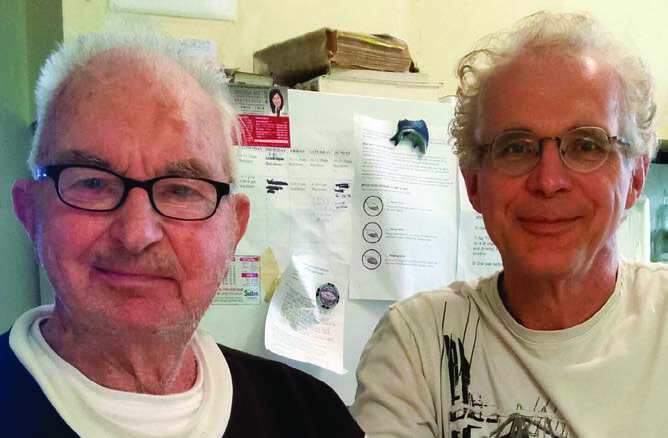It was a man’s world in 1960 when a group of men from British Columbia’s mineral exploration and mining community gathered in Vancouver to form an investment club named The Mining Men. Fifty-five years later, the club is still a going concern, but it is no longer exclusively a men’s club. The club now accepts new members, including women, and it meets monthly in the AME BC boardroom.
President Peter Folk says the club’s investment portfolio performed “spectacularly” before metal prices began their decline about three years ago, but its performance has drifted downhill ever since. In the summer of 2015, members reached a consensus view for holding cash, which Folk said may be a reflection of the markets in general. “Trying to be optimistic, I consider this to mean that we are at or near a market bottom.”
Ironically, the club’s biggest winner to date wasn’t an exploration or mining play, as might be expected with all its geological talent, but the Pembina Income Fund. The fund, which was based on revenue from pipes used in building construction, eventually rose from $6 per share in October 1998 when the club bought in to a high of more than $43 in April 2015. The shares have since fallen below $30. “We’re still holding on,” Folk says, “but should have sold long ago.”
Longtime member Don Rotherham, formerly with Placer Dome, says the club isn’t just about finding investments with upside potential. “To me, the club has been important as a source of meeting friends and keeping track of what’s going on in the business. I found it more valuable that way than [for] making money.”

The club has attracted some prominent members of Vancouver’s mining community over the years, including Canadian Mining Hall of Fame inductees Jim McDougall and Peter Bradshaw. Current members include retired executives from senior mining companies, independent consultants, and professionals from the junior mining sector. AME BC president Gavin C. Dirom is a third-generation member; his grandfather, Gavin A. Dirom, was a founding member in 1960.
Robert Seraphim also joined in 1960, when industry buzz was focused on porphyry copper discoveries in B.C.’s Highland Valley. More than a decade later, Seraphim and other distinguished geologists contributed editorial content to Porphyry Deposits of the Canadian Cordillera, a Special Volume dedicated to Charles S. Ney, published in 1976 by the Canadian Institute of Mining and Metallurgy. Now, almost 40 years later, the 92-year-old club patriarch is calling for an update of this highly regarded volume.
The spirit of optimism that has kept the industry alive through good times and bad was still evident at a recent meeting of the club, despite the prolonged downturn. “I think we’ll get through this slowdown,” Seraphim says. “The world still needs metals, and that won’t change. But we need the kind of government we had way back when W.A.C. Bennett was in [power]. He was all for getting things done.”
Members also recall how former premier Dave Barrett got things “undone” in the 1970s. “It was a very depressing time, and there weren’t any jobs,” Folk says. He adds that mining executives of that era – Jim McDougall, Dave Barr, Don Mustard, Colin Spence and others – encouraged people to stay in the business. “All of them invited me [into] their offices and took time with me when I was a young geologist looking for work. They didn’t give me a job, but they kept me going.”
Looking ahead, club members generally agree that things will get better with time. But many believe the industry is going through a structural change, rather than a cyclical change or a downturn brought about by onerous government policies.
“I believe it will come back, but it will come back differently,” says Rob Trenaman, a junior mining executive. He notes that raising capital is tougher than ever, with only a few places to go for financing. “Many of us are turning to the ‘Bank of Friends and Family’ to survive.”
Fred Felder, a geologist formerly with Greystar Resources, says monetary policy is a major issue. “Quantitative easing is generating liquidity and driving markets, but the money is chasing very few real things.”
Other members note that, while money may be cheap for the few companies that can get it, there isn’t a time value on money as there was in the past. The lengthy and expensive regulatory process and the costs and complexities of working with First Nations are cited as issues that need to be addressed to help revive the industry.
Club members have supported each other through past industry downturns and are continuing this role in the shared belief that the global economy can’t survive without metals and minerals. “That’s why we’re eternal optimists,” says prospector Gudmund (Bing) Lovang. “Things will get better; we just have to have patience.”
